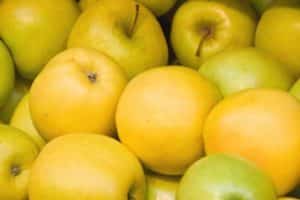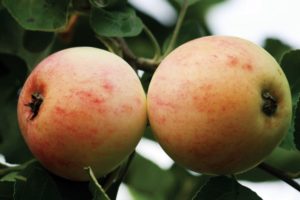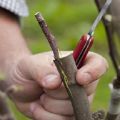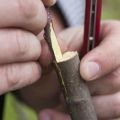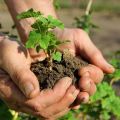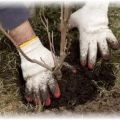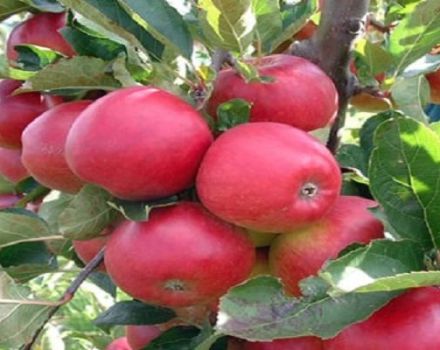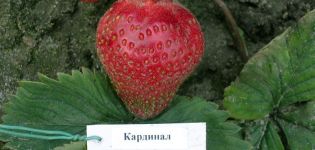How to prepare apple cuttings in spring and when it is time for grafting, where to store
In the life of every gardener, beginner or experienced, there comes a time when you have to plant fruit trees. Apple trees are considered common inhabitants of gardens, with which the owners of the site often have to encounter. Harvesting cuttings for grafting an apple tree has many subtleties, the knowledge of which will facilitate the process and allow you to stock up on good raw materials. Before you go to harvest the scion, it is recommended that you familiarize yourself with the features of the process, the rules, the advice of experienced gardeners.
What you need to know before preparing cuttings for grafting
Before harvesting the cuttings, it is recommended to find out the features of these small parts of the branch, each of which contains a mysterious force that can give life to a full-fledged apple tree. The new tree will retain the maternal characteristics. A prerequisite is to stock up on plant materials from proven trees, after making sure of their varietal characteristics and yield.
Features to remember when stocking up on shoots for vaccination:
- use only annual shoots;
- it is recommended to cut branches located in the outer parts of the crown - strong and well-developed in the sun;
- try to cut off shoots from the southern part of the apple tree - they have short internodes, and their eyes are well developed.
Vaccination will take place without hassle, if you use the shoots growing in the middle tier of the apple tree - they are considered the highest quality.
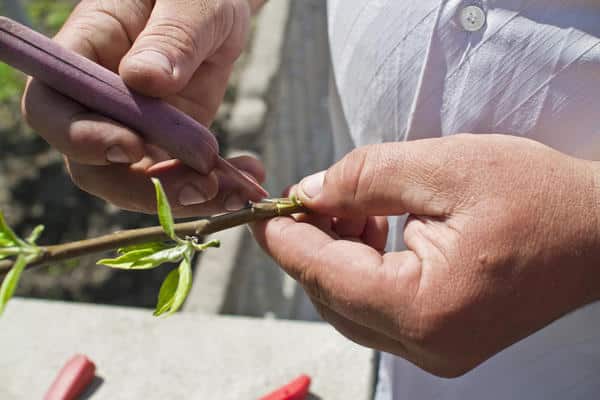
What a good scion stalk looks like
Good grafting cuttings have a few things in common that novice gardeners should know. The harvested apple plant material should look like this:
- length varies from 30 to 40 cm;
- shoots were cut from apple trees aged from 3 to 10 years;
- thickness - up to 10 mm (about the same as a regular pencil);
- there are 3-7 pronounced kidneys.
Another feature of harvested cuttings is that internodes should be short, it depends on them how quickly the graft will take root.
When and how cuttings are harvested
When asked when the cuttings are harvested, experienced gardeners will answer with confidence - it is recommended to engage in an exciting process twice. Go to the garden with the departure of winter, with the first days of spring or before the onset of winter cold - at the end of autumn. Most gardeners cut the scion for the apple tree in the fall.
Autumn benefits of harvesting cuttings:
- the first frosts managed to temper the shoot, destroy pests, and disinfect;
- the plants have entered the dormant stage;
- there is a guarantee that the shoots will no longer freeze, because they have successfully survived the first frosts;
- it is recommended to use only dormant shoots for grafting, and the scion that has retired will remain in this state until spring.
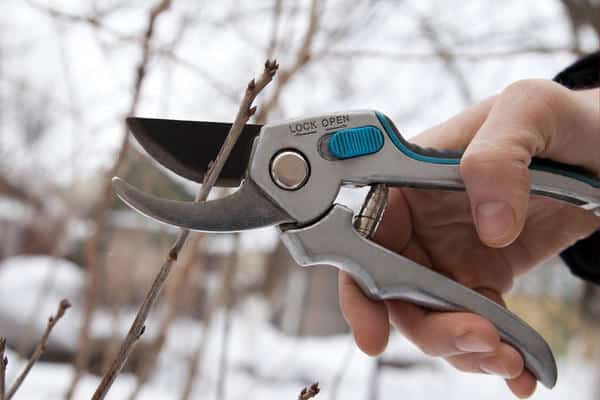
If it was not possible to make a stock in the fall, in the spring it will be possible to cut off the cuttings no worse, the main thing is not to be late. The buds should be at rest, if they began to bloom, there is a risk that the scion will not take root.
Before harvesting shoots, it is recommended to disinfect the secateurs, prepare tags (if the branches are cut from several varieties). Cuttings are cut obliquely, immediately knitted into bunches, they indicate which variety is prepared.
Storing cuttings: where and how to store
A prerequisite for successful storage is that the cuttings must be at rest until they are used. The main tasks facing the gardener:
- do not allow the shoots to freeze;
- make sure that they do not start to deteriorate;
- prevent drying;
- do not allow rodents to spoil the planting material.
There are several good ways to preserve plant materials, each with their own advantages and disadvantages. Residents of cool regions, in which snow constantly lies in winter, are recommended to use special piles:
- Dig shallow (up to 30 cm) trenches, lay cuttings, having previously covered the bottom with needles of conifers.
- Cover the plant materials with spruce branches, chopped straw, with a layer of soil.
- Pour a high snowdrift (at least half a meter), tamp with a shovel.
- Put a layer of sawdust (up to 20 cm).
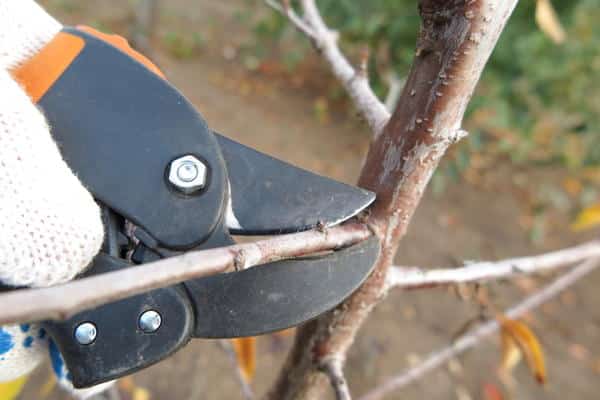
The disadvantage of this method is that there is a risk of damage to the blanks for grafting by rodents. You can prevent spoilage with a plastic or metal mesh with fine meshes.
It is also recommended to use a cellar for storage. It is enough to put the cuttings in burlap or dense bags (you do not need to tie them) and send them to a container with moistened sawdust, peat, moss. Moisturize as needed.
If there are few cuttings, use the refrigerator. Place the plant materials in a polyethylene bag, leave loosely tied, put on the lower shelf. Check during storage.
When is vaccination time
Despite the fact that the apple tree grafts well throughout the year, it is best to do this in early spring. It is recommended that the grafting be carried out at the beginning of the growing season - at this time the sap is just beginning to actively move along the wood, and the bark lags well behind.
If the inoculation is carried out in a split, then it is better to hurry up and carry out the work even before the juice begins to move, during the rest period. Usually this is the beginning of April, but in warm regions it is recommended to start the process earlier - from mid-March. If there is a risk of frost return, postpone the dates for several weeks.
Grafting, in which the scion is inserted into the side cut, is done in summer, spring, even winter, especially if the seedlings have already outgrown.
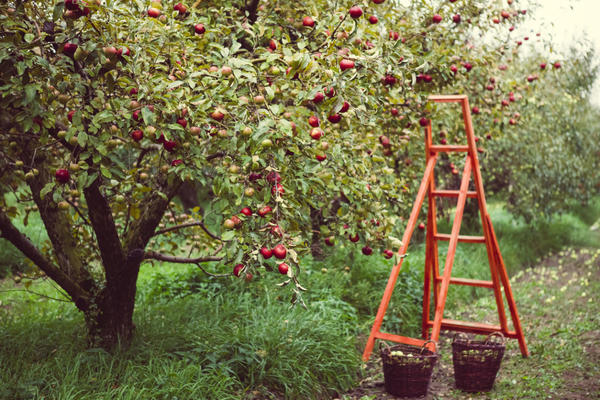
Helpful advice from experienced gardeners
There are some useful tips from seasoned gardeners that beginners are recommended to listen to:
- Before grafting, make sure that the cuttings are suitable - lower them with a cut into water, after half an hour carefully examine the liquid. If it remains transparent, use the shoots, if it becomes cloudy or turns yellow - discard the use - they are no longer suitable.
- Use plant materials for harvesting from trees that are constantly pruned - they are much better stored and actively take root.
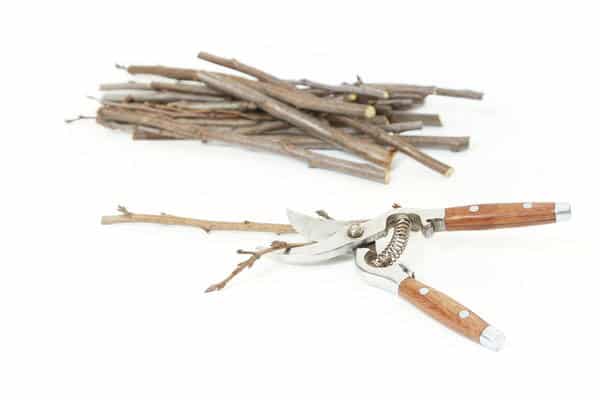
- When harvesting from young seedlings, try to cut off only the branches that will be removed during pruning, so as not to injure the tree.
- Use a garden pitch - it will protect the sections from infection, bacteria that can damage the shoots.
- Harvest more cuttings than necessary - even if some of them deteriorate during storage, there will be enough plant materials for grafting.
Another important tip is not to use thin, damaged or twisted branches - you won't be able to grow a good apple tree from them.
Harvesting cuttings is a fun process, and after a little effort, it will certainly end with wonderful results. The apple tree will surely thank you for your work with a good harvest of juicy, aromatic and healthy fruits. The main thing is to follow the rules, recommendations of experienced gardeners and not engage in experiments that can harm the tree.

